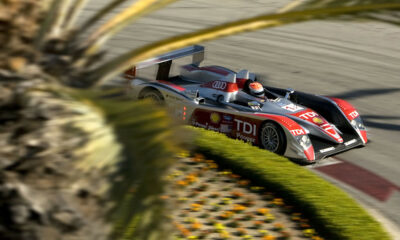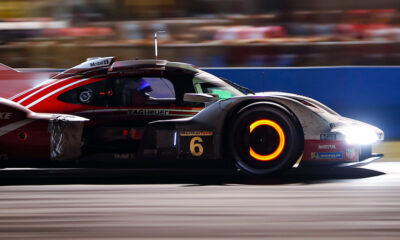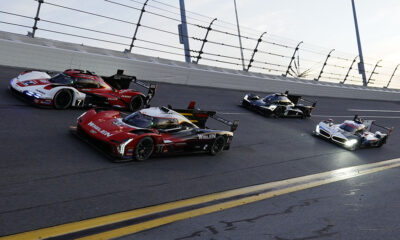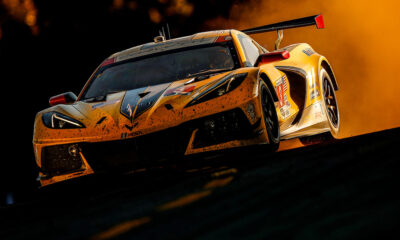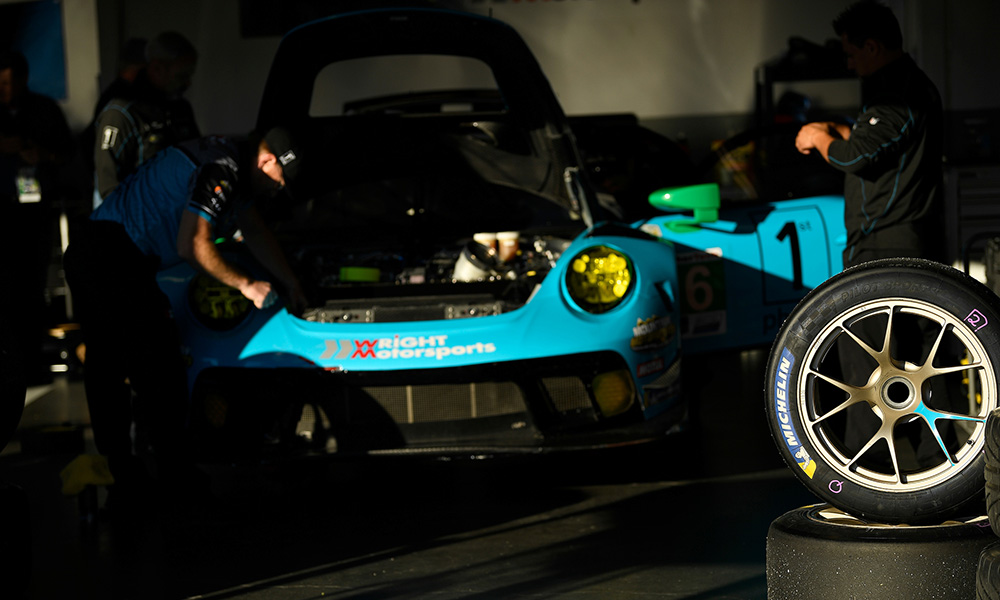
Photo: Michelin
Michelin’s return to Daytona International Speedway this July compared to January takes on a greater significance.
It serves as Michelin Motorsport’s return to racing among its five recognized global championships (MotoGP, FIA Formula E, FIA WEC and FIA WRC).
It also comes after Michelin and IMSA worked in close collaboration to develop a series of protocols to ensure the health and safety of all Michelin staff, race teams and IMSA officials working the event. Additionally, they made tire selections to adapt to the evolving IMSA schedule, which sees all but two of its remaining races shifted from their original dates.
For a company renowned for its hands-on dedication to its teams and factory supported entries, the nature of IMSA’s return to racing following the COVID-19 global pandemic will see Michelin pivot to a largely hands-off approach to follow the established event operations protocols.
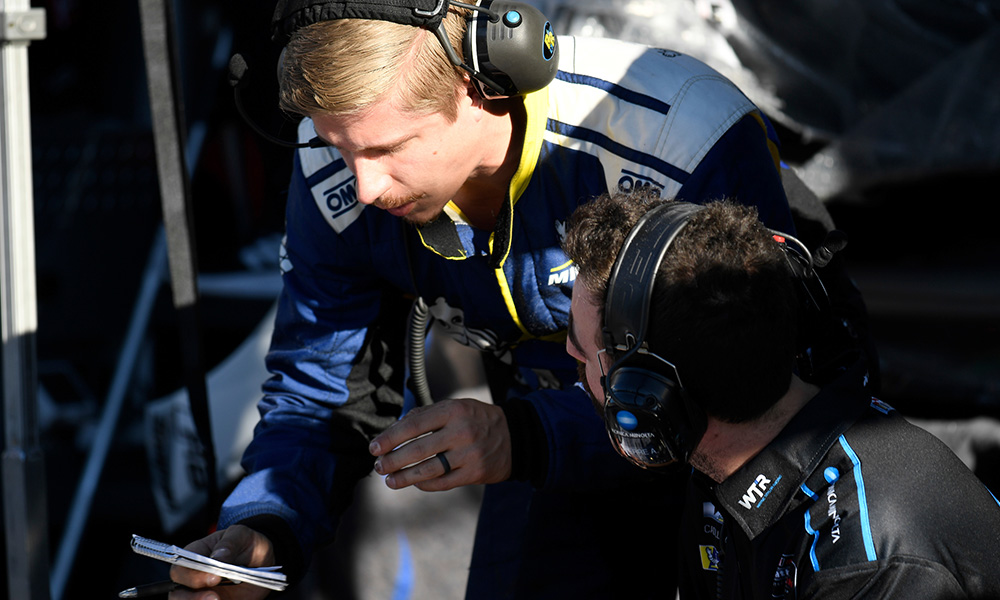
Photo: Michelin
Reduced On-Site Staff
There were 40 Michelin staff, including leadership, engineers and motorsport tire specialists that descended at the Rolex 24 At Daytona in January.
In July, that number drops all the way down to six.
Not six plus engineers. Six total people.
The six Michelin staff this race includes new North American motorsports director Tony Ménard, the technical team of Ken Payne, Hans Emmel, Robbie Holley and Joe Ignacio, and operations support from Tom Sullivan.
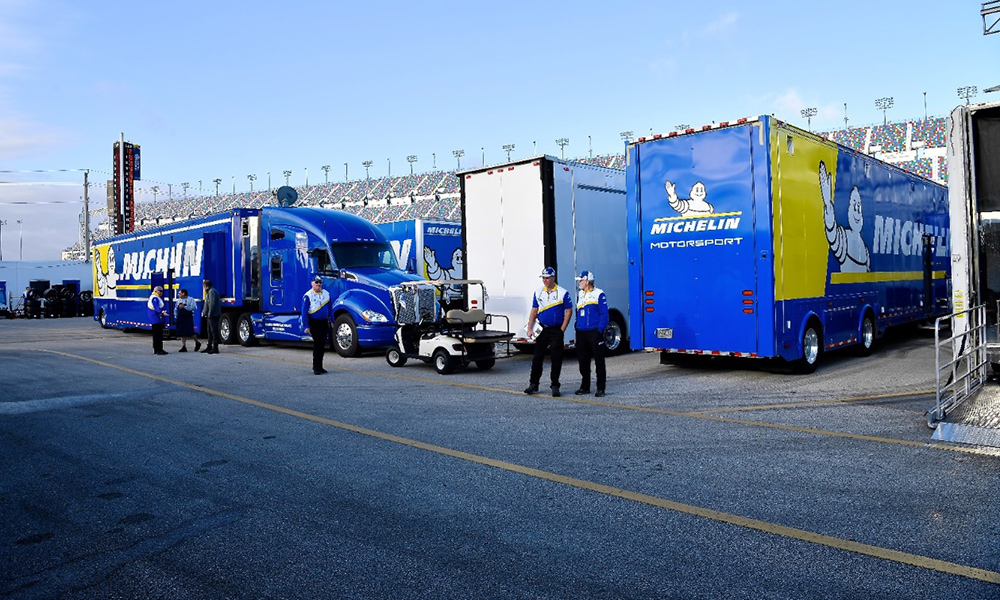
Photo: Michelin
Tire Pick-Up/Drop-Off
The Michelin tire workshop moves to a new location for this race. It’s closer to the competitors but still isolated outside the primary garage area where IMSA WeatherTech SportsCar Championship teams are assembled.
Ordinarily, the workshop lives near the IMSA Michelin Pilot Challenge paddock, in a separate garage area compared to the WeatherTech garage. For this race, it moves to the “skid pad” where Ferrari Challenge teams paddock in January. This keeps the workshop away from the paddock, but at a much closer distance.
Designated pickup and drop-off places are established at a distance away from the workshop. Michelin and its operational and logistics support partner, Jackson Motorsports Group, will take the tires away once dropped off, and return them in separate, spaced out areas afterwards.
The workshop is off limits to all non-essential personnel for this event. In addition to the six Michelin personnel, Jackson will bring 17 of its associates to the event to mount and balance the tires.
Access to the Michelin Motorsport engineering trailer will be limited to Michelin Motorsport staff only. A virtual meeting can be arranged if required.
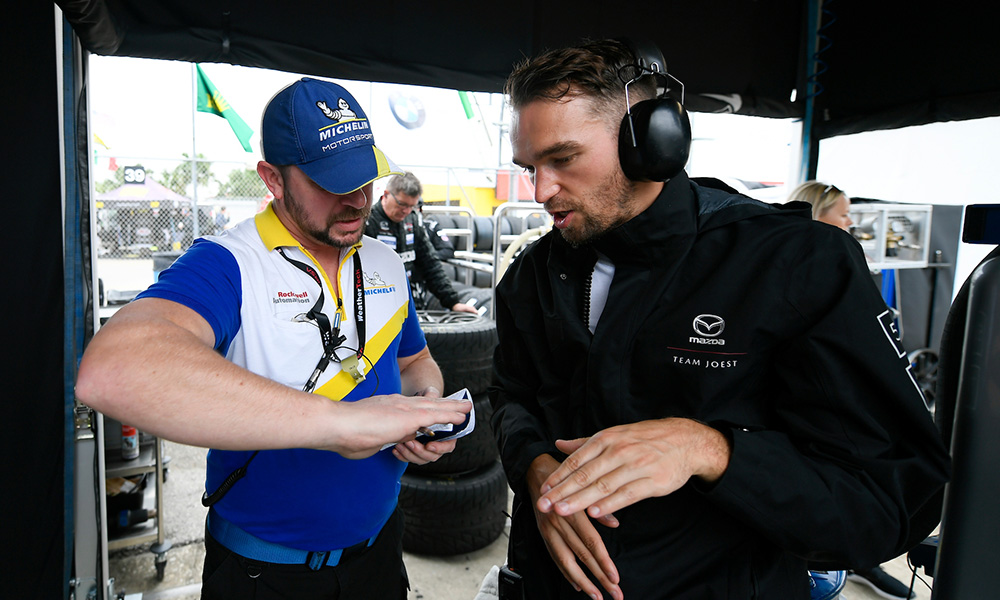
Photo: Michelin
How Things Will Be Monitored
In “traditional” events, Michelin engineers and motorsport tire specialists help teams monitor their sets, pressures, temperatures and wear.
But at Daytona, the engineers and motorsport tire specialists will watch from a different place: their homes and couches.
Michelin staff will operate solely from the Michelin engineering trailer, and only one person will be trackside in pit lane at the Michelin Pit Stand at any time for active sessions and monitoring. That person will staff pit lane but will not enter any team’s pit box or garage. Teams will report tire related data in at the end of each session and establish a communication path.
Each technical partner team will have open two-way communication with Michelin technical teams on site.
Temperatures will be different. The highest ambient temperature seen at the Rolex 24 At Daytona (68 degrees Fahrenheit) is likely to be less than the lowest ambient temperature we will see during the sprint race.
The IMSA DPi and GTD class teams will run the harder compounds as the single compound selected.
Each of the GTLM teams have three compounds to choose from, but temperatures are likely to favor the medium to hard range of tires in a dry race. If temperatures are lower than expected, or a Florida in July pop-up storm occurs, teams will have to adjust and react accordingly.
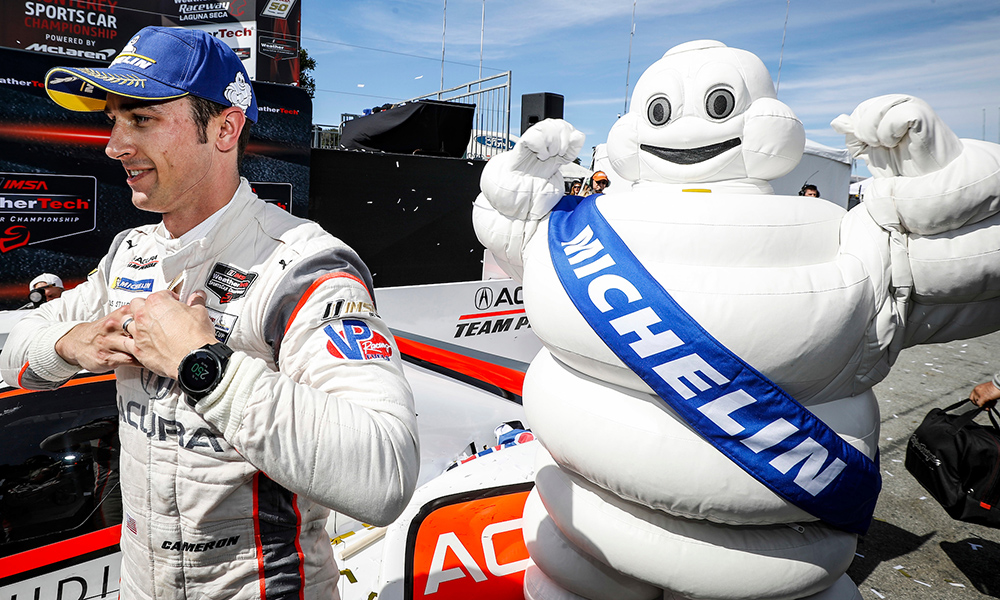
Photo: Mike Levitt/IMSA
Celebrating With Air Fives, Not High Fives
In the French tradition, Michelin engineers and staff typically begin each day with a handshake.
At the end of the weekend, they’ll greet the winning team and the Michelin Man in victory lane with another handshake, high-five or other generally appropriate gesture.
But at Daytona, that won’t be happening either.
IMSA and Michelin have agreed that greeting people in person can occur but must feature “air fives” only.
The official line from the event supplementary regulations reads: “Shaking hands when greeting is prohibited, air fives, please.”
In theory, the Michelin Man would be the safest person on site.
The person inside the suit has a natural line of social distancing measures built in place with a protective seal.
But this race, the Michelin Man will be sending air fives from abroad rather than in victory lane. This will make for an acceptable socially distant celebration for the winners in the three classes.



















